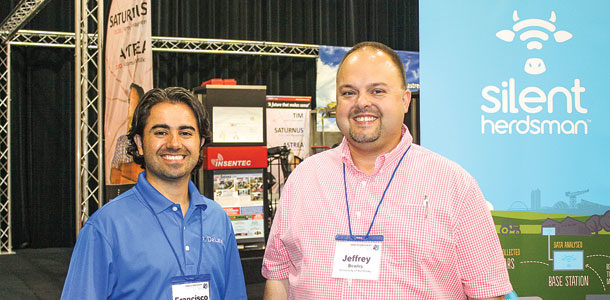Robotic milking, automated calf feeding, daily body condition scoring, in-line sensors and monitors for just about every function of a dairy cow’s day and more were covered at Precision Dairy 2015.
Held June 24-25, in Rochester, Minnesota, the conference was organized by the University of Minnesota and the University of Kentucky.
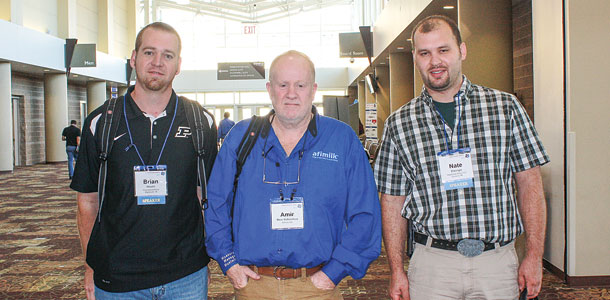 “We wanted to create a forum for all things related to precision dairy – a place to convene, learn what is being used and how it can benefit the dairy industry,” University of Minnesota’s Marcia Endres said, who served as the conference chair for the two-day event that attracted around 300 people and included a trade show and more than 20 speakers on various cow monitoring technologies.
“We wanted to create a forum for all things related to precision dairy – a place to convene, learn what is being used and how it can benefit the dairy industry,” University of Minnesota’s Marcia Endres said, who served as the conference chair for the two-day event that attracted around 300 people and included a trade show and more than 20 speakers on various cow monitoring technologies.
Among program highlights were 10 dairy producer presenters. From across the U.S. and Canada, they discussed their experiences with various technologies and how they use data on their dairies.
Ontario dairyman Gerhard Ritzema explained how the reports from their, a real-time milk sample collection and analysis technology drive not only individual cow breeding decisions but also mastitis and ketosis treatments. “I don’t do anything with the cow before looking at Herd Navigator,” he stated.
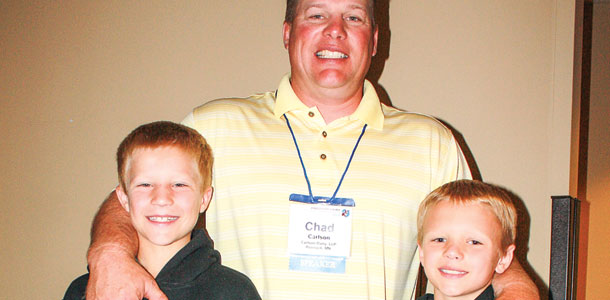
Sander Penterman, who milks 850 cows at Dutch Dairy LLC in Wisconsin, talked about his ear tag sensors that monitor temperature, rumination and behavior.
This technology has helped him improve the herd’s pregnancy rate from 22 to 24 percent while reducing hormone shots by 90 percent. The Internet-based system can be accessed from the office or in the barn via a computer, smartphone or tablet.
Even as precision technologies for dairy become more sophisticated, Minnesota dairyman Chad Kieffer said that beyond the technical factors, success still comes down to a couple of basic components. He attributes his 100-pound herd average on 300 cows milked in five robots to having a passion for cows and good management skills.
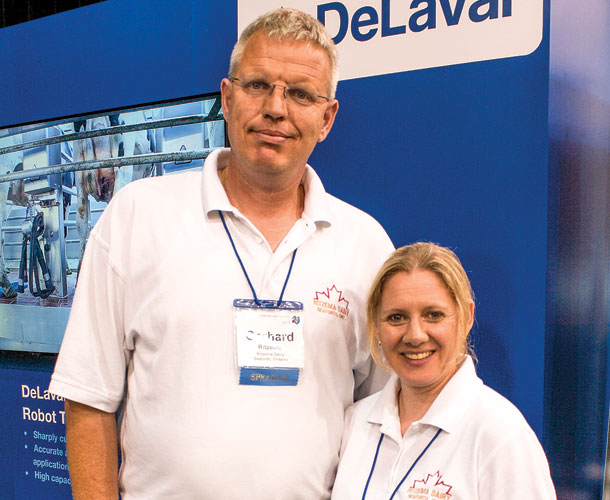
From the research side, University of Kentucky Extension dairy specialist and conference co-chair Jeff Bewley enlightened attendees on the “new era” of technologies available to dairy producers. From milk composition to lying time and rumination to calving detection, he explained both the benefits and limitations of precision technologies.
Bewley sees an opportunity for the wealth of information available through these various monitoring devices, much like other businesses and industries.
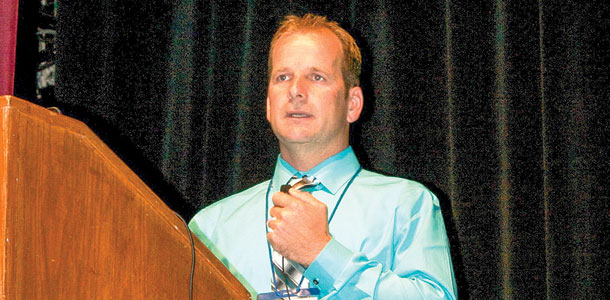 “Big data is a big deal,” Bewley told attendees at the conference, noting that 90 percent of the world’s data was created in the last two years. However, with 80 percent of that unstructured, he warned that too much information can be overwhelming, and unless the data can be translated into an immediate action, it may not be a worthy investment.
“Big data is a big deal,” Bewley told attendees at the conference, noting that 90 percent of the world’s data was created in the last two years. However, with 80 percent of that unstructured, he warned that too much information can be overwhelming, and unless the data can be translated into an immediate action, it may not be a worthy investment.
Looking into the future, Bewley foresees dairy producers investing in precision technologies for different reasons. “Eventually, we will see more sensors for well-being and environmental monitoring versus reproductive health,” he said.
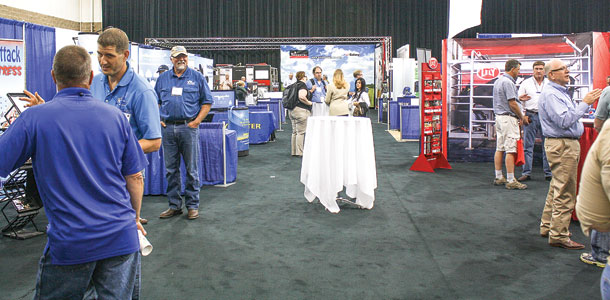
One of the unique aspects of precision dairy technology is its widespread appeal. Endres explained that robotics and monitoring sensors are not size-dependent; thus, they will have an appeal to dairies of various sizes and styles as a solution to challenges such as a short labor supply. “Each technology will have its place,” she added. “It’s not one-size-fits-all.”
Next year, the first international Precision Dairy Farming Conference will be held in Leeuwarden, the Netherlands, June 21-23. PD
PHOTO 1: No strangers to the pages of Progressive Dairyman, Francisco Rodriguez caught up with conference co-chair Jeff Bewley from the University of Kentucky.
PHOTO2: Presenters Brian Houin (Homestead Dairy, Plymouth, Indiana) and Nate Elzinga (Daybreak Dairy LLC, Zeeland, Michigan) discussed how they integrate data from their various monitoring systems to make decisions on their dairies. The dairymen are joined here by Amir Ben-Yehoshua, representative from Afimilk.
PHOTO3: Dairy producer and presenter Chad Carlson brought along the next generation at Carlson Dairy LLP, his son Conlan (left) and nephew Cavin (right). The family recently built a new calf barn with automated feeders on their 1,250-cow dairy near Pennock, Minnesota.
PHOTO4: Gerhard and Heather Ritzema traveled from Ontario to talk about how technology has changed the way they run their dairy.
PHOTO5: Sander Penterman explained how he uses technologies like rumination and activity monitors and automated calf feeders to improve the health of his herd.
PHOTO 6: Attendees at the 2015 Precision Dairy Conference. Photos by Peggy Coffeen.

-
Peggy Coffeen
- Editor
- Progressive Dairyman
- Email Peggy Coffeen
